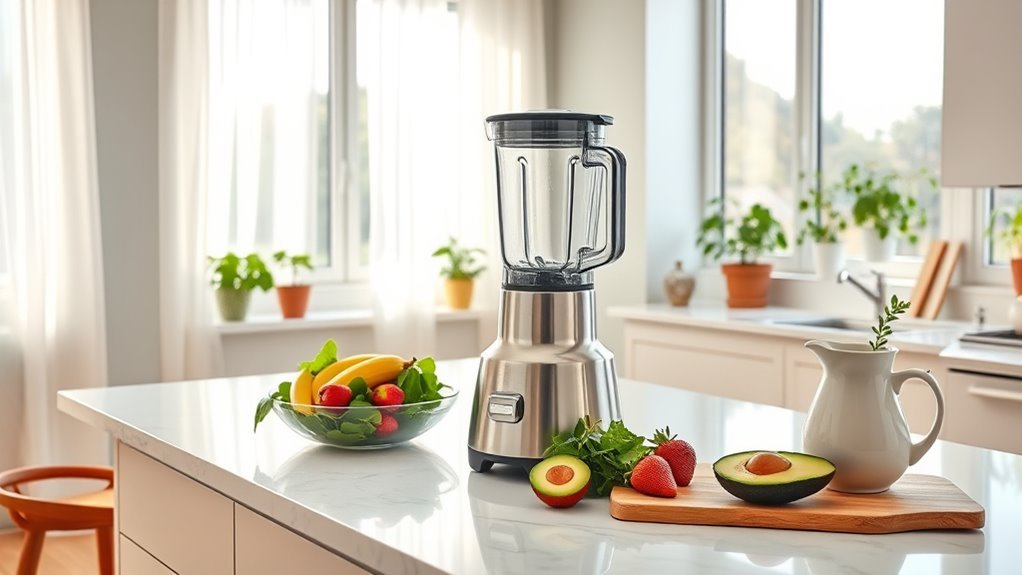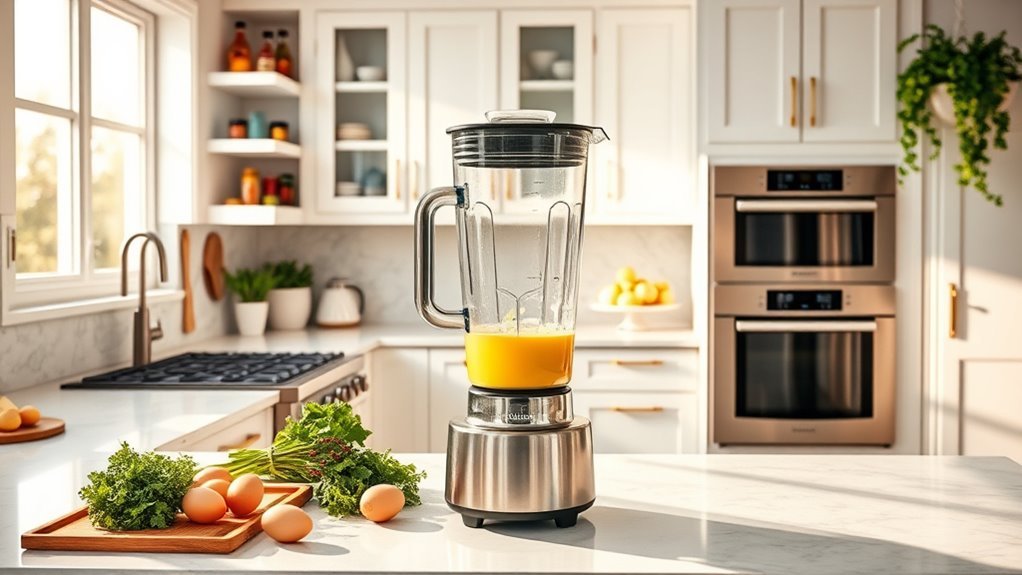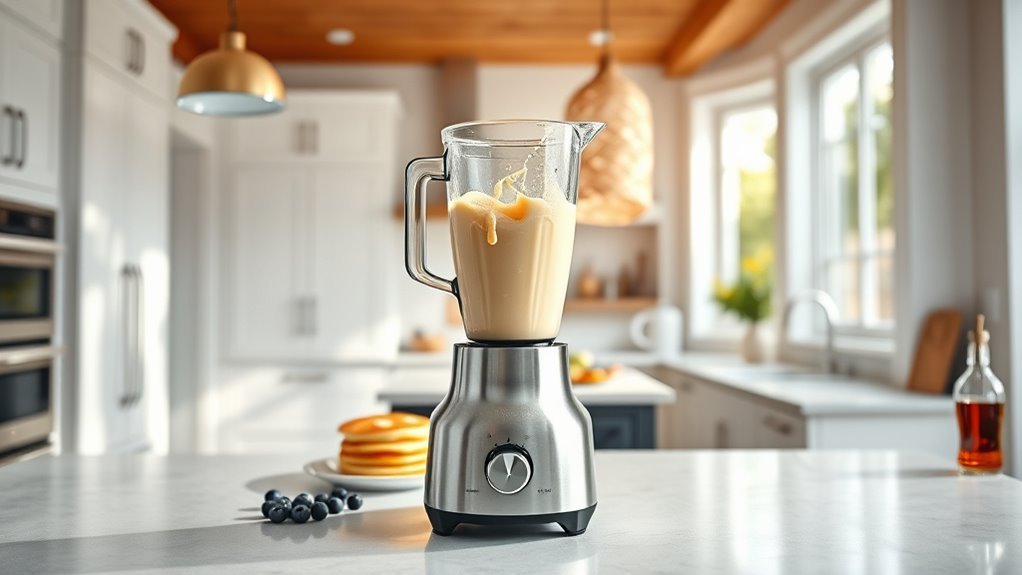We’ve always wondered if countertop blenders are really worth the kitchen counter space they occupy. After testing ours extensively, we’re convinced they are—and it’s not just for smoothies. A good blender can transform ordinary ingredients into extraordinary dishes, often in seconds rather than minutes. From silky-smooth pancake batter to homemade nut butters, these versatile machines might actually be the most underutilized tool in your kitchen arsenal. So what else can they do?
Perfecting Smoothies With Your Blender

Why do so many smoothies turn out lumpy or improperly blended? Well, it’s usually because we’re not adding ingredients in the right order on our countertop blenders.
To make smoothies that are actually smooth, we’ve found that sequence matters.
Start with liquids (water or milk) to help the blades move freely. Next, add any powders you’re using—they’ll mix better this way. Then toss in your leafy greens, followed by soft fruits like bananas. Finally, add frozen fruit and hard ingredients last, which helps push everything down toward the blades.
This stacking method makes a huge difference! Your countertop blender will work more efficiently, and you’ll need to blend until smooth for less time. Trust us, order matters!
For optimal blending results with tough ingredients, upgrading to a high-performance blender can handle everything more effectively.
Quiet Blending With the Tea Towel Technique
The noisiness of countertop blenders can be a real problem, especially if you’re making your morning smoothie while others are still sleeping. We’ve discovered a simple yet effective hack: placing a tea towel underneath your blender. This technique can reduce noise by up to 50%!
To use your blender more quietly, just fold a thick tea towel and position it under the unit.
The thicker the towel, the better it absorbs those jarring vibrations that make kitchen appliances so loud.
Just make sure you don’t block any ventilation areas—we definitely don’t want your blender overheating!
While countertop blenders won’t become completely silent with this method, they’ll be noticeably quieter, making early morning or late-night blending much more considerate for everyone in your household.
For those looking to minimize noise further, consider upgrading to high-performance blenders, which often include features that enhance overall blending efficiency.
Creating Restaurant-Quality Scrambled Eggs

Have you ever wondered how professional chefs achieve those perfectly fluffy, melt-in-your-mouth scrambled eggs? Well, the secret might be sitting right on your countertop! Using your blender to make scrambled eggs creates a silky smooth texture that’s nearly impossible to achieve with just a fork.
| Step | Technique | Result |
|---|---|---|
| 1 | Crack eggs directly into blender | Even mixture |
| 2 | Add splash of milk or cream | Incorporates air |
| 3 | Blend for just a few seconds | Combines whites and yolks |
| 4 | Pour into hot pan | Maintains aeration |
| 5 | Cook as usual | Restaurant-quality eggs |
We’ve found that this method works wonders because the blender introduces tiny air bubbles that make your eggs incredibly light. It’s probably the easiest upgrade you’ll ever make in your breakfast routine!
Homemade Ice Cream Without Special Equipment
Many people believe fancy equipment is necessary for making homemade ice cream, but we’re here to tell you that’s simply not true!
Your countertop blender makes creating creamy frozen treats incredibly easy.
We’ve found that starting with heavy cream or high-fat coconut milk gives the best results.
Just blend your base with sugar and flavorings on high for a few minutes until smooth.
Hit that pulse button to incorporate any extras like chopped nuts or fruit.
Unlike immersion blenders or personal blenders, a standard countertop model has enough power to create the perfect consistency.
Pour your mixture into a freezer-safe container and freeze for at least four hours.
The texture won’t be exactly like store-bought ice cream, but honestly, we think it’s even better—and you made it yourself!
Silky-Smooth Pancake Batter in Seconds

From ice cream to breakfast—that’s the beauty of a quality countertop blender! We’ve discovered the secret to perfect pancakes is all in how you load your blender first. Always start with liquids before adding harder ingredients to prevent them sticking to the blender blades.
| Ingredient | Amount | Purpose |
|---|---|---|
| Cottage cheese | 1 cup | Protein & moisture |
| Eggs | 4 | Structure & binding |
| Rolled oats | 1 cup | Fiber & texture |
| Milk | As needed | Thinning agent |
| Vanilla/cinnamon | To taste | Flavor enhancer |
The pulse function is your best friend here—just a few quick bursts and you’re done! Pour directly from the blending cup for less mess. We think this might be the easiest breakfast hack ever—silky-smooth batter in under a minute. Who knew mornings could be this simple?
Quick and Consistent Sauce Preparation
Sauce-making transforms into a breeze with your trusty countertop blender!
We’ve found that homemade tomato sauce comes together in minutes—just toss in a can of diced tomatoes, garlic cloves, fresh basil, and a splash of olive oil.
The secret? Add liquids first, then dried ingredients, followed by greens and softer items before finishing with harder components.
For perfect soups and sauces, try pulsing initially before blending to your desired consistency.
You know what’s great? You can sneak veggies into sauces without anyone noticing—perfect for picky eaters!
Homemade salad dressing is actually super simple too.
Just combine olive oil with vinegar, herbs, and seasonings, then blend until emulsified.
Most sauces might need a quick heat-through in a pan, but the work’s basically done when your blender stops!
Crafting Fresh Nut Milks and Butters
Transform ordinary nuts into creamy, nutritious beverages and spreads with your countertop blender!
For homemade nut milk, soak raw almonds or other nuts for at least 24 hours to soften them.
Then simply add the soaked nuts with fresh water (about 1:4 ratio) and blend on high for 1-2 minutes.
Unlike a hand blender, your countertop model has the power to create perfectly smooth results.
Don’t forget to strain through a nut milk bag for that silky texture!
Making nut butters is just as easy.
Roast your nuts first, then blend on high for 5-10 minutes, scraping down sides occasionally.
The result? Delicious spreads perfect for morning smoothies.
We love how fresh nut milk lasts about three days refrigerated, while homemade nut butters stay good for two weeks.
Transforming Stale Bread Into Versatile Breadcrumbs
Don’t throw away that stale bread!
We’ve all been there—finding forgotten bread that’s too dry to enjoy.
Well, your countertop blender can actually rescue this kitchen waste in seconds.
Simply break that stale bread into chunks and pulse it in your blender until you’ve got perfectly uniform breadcrumbs.
In our experience, these homemade breadcrumbs work even better than store-bought versions.
They’re like little flavor sponges that soak up whatever seasonings you add!
We love using them for coating chicken, binding meatballs, or sprinkling over mac and cheese for that perfect crunch.
Plus, there’s something satisfying about transforming something you’d normally toss into something with so many versatile uses.
Your wallet—and the planet—will thank you.
Frequently Asked Questions
What Can You Do With a Portable Blender?
Like busy bees, we’ve discovered portable blenders offer versatility despite their design flaws. We can blend on-the-go with sufficient battery life, using travel cases for protection, while appreciating their noise reduction and multiple power sources.
What Is a Countertop Blender Used For?
We use countertop blenders for smoothies, soups, cocktails, sauces, and batters. They’re versatile but require regular cleaning tips, mindful power consumption, proper blender maintenance, and awareness of noise levels and capacity limits.
What Else Can a Blender Be Used For?
Beyond blending beverages, we can cleverly create DIY cleaners, mix paint for projects, craft cosmetic recipes, prepare plant fertilizer blending solutions, and some even attempt blender repairs with the right tools.
Why Would Someone Want a Portable Blender?
We love portable blenders for their travel benefits and mobility features. They save space in small kitchens, offer battery perks for cordless blending, and integrate seamlessly with our on-the-go lifestyle.

